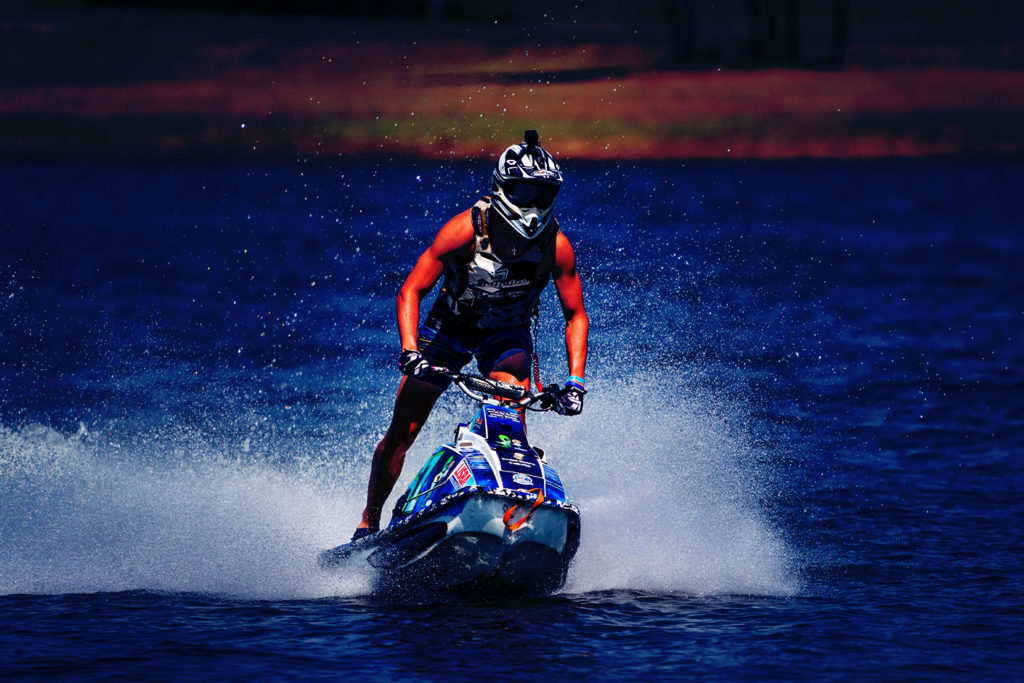Jumping waves on a jet ski can be exhilarating, but it also comes with risks that must be managed carefully to ensure safety…
- Skill Level – Jumping waves requires reasonable control and handling of the jet ski. Beginners may find it challenging to maintain balance and control during jumps.
- Water Conditions – Ensure the water conditions are suitable for jumping waves. Choppy or rough waters can make jumping unpredictable and increase the risk of accidents.
- Speed – Controlling the speed of the jet ski is crucial. Excessive speed can lead to loss of control during a jump or upon landing.
- Body Position – Proper body positioning helps maintain balance and control. Lean forward slightly and keep a firm grip on the handlebars.
- Landing Technique – When landing a jump, land flat or at a slight angle to the waves. Landing directly on the crest of a wave can be jarring and may cause you to lose control.
- Safety Gear – Always wear a personal flotation device (PFD) and any other recommended safety gear, such as a wetsuit or helmet.
- Awareness – Be aware of your surroundings, including other watercraft, swimmers, and obstacles in the water.
- Training – If you’re new to jumping waves on a jet ski, consider taking lessons from a certified instructor to learn proper techniques and safety precautions.
Jumping waves on a jet ski can be safe with caution, experience, and respect for the water and your abilities. Always prioritize safety and enjoy the thrill responsibly.



